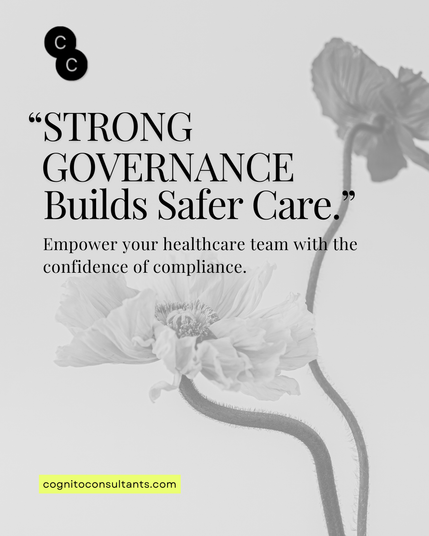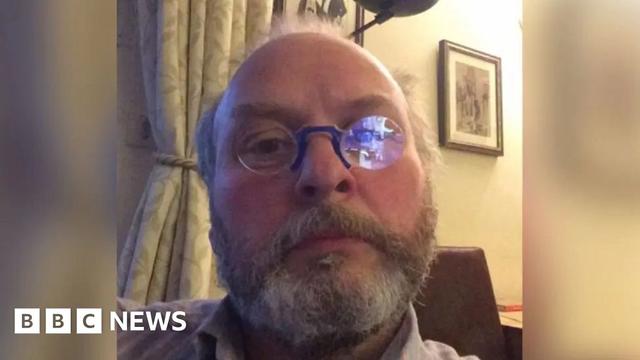Great healthcare starts with great governance.
At Cognito Consultants, we help NHS Trusts and healthcare organizations build systems that inspire trust, accountability, and excellence every day. 💪
#GovernanceExcellence #HealthcareLeadership #GRCinHealthcare #CognitoConsultants #RiskManagement #NHSCompliance #PatientSafety #HealthcareGovernance #Cognito #HealthcareSuccess
#PatientSafety
Revision hip surgery is far more complex and risky than the first one. Bones become weak, recovery slows down, and chances of complications increase.
#RevisionSurgery #HipReplacement #Implant #Orthopedics #PatientSafety #BoneHealth #DrGauravGupta
AI system can diagnose sepsis with 99% accuracy before it becomes life-threatening 🤖💉⚠️
Read Full Article
#AI #SepsisDiagnosis #HealthcareInnovation #MachineLearning #PatientSafety https://news.northeastern.edu/2025/10/15/ai-agent-helps-er-doctors-predict-sepsis-shock/
Reenviado desde Science News
(https://t.me/experienciainterdimensional/9357)
HC-One fined for neglect after resident's death due to choking incident
A care home company, HC-One Limited, has been fined £1.9 million following the death of Margaret Campbell, a 96-year-old resident who choked on her dinner in June 2022 at Cradlehall Care Home in Inverness. The company admitted to health and safety failures that contributed to her death. Despite her ... [More info]
Why Demand for Bariatric Beds is Rising
At the core of the growing bariatric beds market is the urgent need to deliver care solutions for patients with obesity or limited mobility. The Bariatric Beds Market is expected to register a CAGR of 7.50% from 2025 to 2031.
Get More information :- https://www.theinsightpartners.com/reports/aircraft-gearbox-market
#HospitalBeds #PatientCareInnovation #HealthcareTech #HomeHealthcare #MedicalEquipment #SmartHospitalBeds #PatientSafety #ChronicCareSolutions #HealthcareInfrastructure
𝗧𝗵𝗶𝘀 𝘄𝗲𝗲𝗸 (𝟭𝟵–𝟮𝟱 𝗢𝗰𝘁 𝟮𝟬𝟮𝟱) 𝘄𝗲 𝗺𝗮𝗿𝗸 𝗜𝗻𝘁𝗲𝗿𝗻𝗮𝘁𝗶𝗼𝗻𝗮𝗹 𝗜𝗻𝗳𝗲𝗰𝘁𝗶𝗼𝗻 𝗣𝗿𝗲𝘃𝗲𝗻𝘁𝗶𝗼𝗻 𝗪𝗲𝗲𝗸 — a reminder that keeping infections away is a team effort. The 2025 theme, “Stand UPPP for Infection Prevention — Unite, Prevent, Protect, Prevail,” calls on everyone — healthcare teams, patients, families and communities — to play a part.
𝗪𝗵𝘆 𝗶𝘁 𝗺𝗮𝘁𝘁𝗲𝗿𝘀
- Hospital‑acquired infections remain a major global threat: in many places 7–15 in every 100 patients get a healthcare‑associated infection during a hospital stay.
- Proper infection prevention can prevent around 70% of infections through simple, cost‑effective practices.
- Preventing infections protects vulnerable people (children, elderly, immunocompromised) and helps healthcare systems work better.
𝗦𝗶𝗺𝗽𝗹𝗲 𝗮𝗰𝘁𝗶𝗼𝗻𝘀 𝘁𝗵𝗮𝘁 𝗺𝗮𝗸𝗲 𝗮 𝗯𝗶𝗴 𝗱𝗶𝗳𝗳𝗲𝗿𝗲𝗻𝗰𝗲
- 𝗛𝗮𝗻𝗱 𝗵𝘆𝗴𝗶𝗲𝗻𝗲: wash with soap and water or use alcohol hand rub frequently.
- 𝗩𝗮𝗰𝗰𝗶𝗻𝗮𝘁𝗶𝗼𝗻: stay up to date with recommended vaccines.
- 𝗨𝘀𝗲 𝗣𝗣𝗘 𝗰𝗼𝗿𝗿𝗲𝗰𝘁𝗹𝘆: masks, gowns and gloves when indicated.
- 𝗦𝗮𝗳𝗲 𝗶𝗻𝗷𝗲𝗰𝘁𝗶𝗼𝗻𝘀 𝗮𝗻𝗱 𝗱𝗲𝘃𝗶𝗰𝗲 𝗰𝗮𝗿𝗲: speak up about safe practices.
- 𝗖𝗹𝗲𝗮𝗻 & 𝗱𝗶𝘀𝗶𝗻𝗳𝗲𝗰𝘁: keep surfaces and medical equipment properly cleaned.
- 𝗥𝗲𝘀𝗽𝗶𝗿𝗮𝘁𝗼𝗿𝘆 𝗵𝘆𝗴𝗶𝗲𝗻𝗲: catch it, bin it, kill it — cover coughs, dispose tissues, clean hands.
- 𝗔𝘀𝗸 𝗾𝘂𝗲𝘀𝘁𝗶𝗼𝗻𝘀: if you’re in hospital, ask staff about hand hygiene, device care and infection prevention steps.
𝗤𝘂𝗶𝗰𝗸 𝗳𝗮𝗰𝘁𝘀 & 𝗵𝗶𝘀𝘁𝗼𝗿𝘆
- IIPW is observed the third week of October — in 2025 it runs 19–25 Oct.
- APIC leads annual campaigns and themes to educate professionals and the public.
- The week highlights the crucial role of infection preventionists who help cut hospital‑associated infections significantly.
Stand UPPP for Infection Prevention — Unite, Prevent, Protect, Prevail. Small habits save lives. What one infection‑prevention habit will you adopt today?
#SCABPharmacy #IIPW2025 #InfectionPrevention #HandHygiene #VaccinesWork #PatientSafety #HealthcareSafety #PPE #StopHAIs #CleanHandsSaveLives #ProtectEachOther #StandUPPP #InfectionControl
Inquiry Raises Concerns Over Use of Digital Monitoring System in Mental Health Care
A public inquiry into the deaths of at least 2,000 people under England’s mental health services has raised serious concerns about a digital monitoring system known as Oxevision. The system, used by about half of the country’s mental health trusts, employs infrared sensors and cameras to monitor pat... [More info]
New report links rising cyberattacks to delayed treatments and compromised care. In healthcare, every breach is a human risk. ❤️⚕️ #HealthcareSecurity #PatientSafety
https://www.helpnetsecurity.com/2025/10/13/report-cyberattacks-disrupt-patient-care/
If we want the most innovation in software, we should tap into the biggest source: Open Source.
With AMPEL, we’re working on bringing this concept into regulated medical software in Germany.
2/2
What is AMPEL? Last week, the tv station MDR visited us and filmed a short report about AMPEL at University Hospital #Leipzig.
What does AMPEL do now? We like to describe it as a digital infrastructure enabling clinical AI in routine #healthcare. It detects critical situations in real time to improve #PatientSafety.
CW: Tod eines Patienten / ärztliches Versagen
Als junger Arzt in der Notaufnahme war das meine größte Angst: jemanden nach Hause schicken, der bleiben müsste.
Meistens ist es harmlos. Nur manchmal nicht – und das vergisst man nie.
https://nytimes.com/2025/10/05/well/sam-terblanche-virus-death-columbia.html
#SalamonSMD on X wrote:
Calling #MedTwitter and #LongCOVID, #PEM & #MECFS circles:
I am compiling evidence against graded exercise therapy. Please share your favorite papers in replies.
#PatientAdvocacy #BelievePatients #PacingNotPushing #PatientSafety #LongCovidAwareness #pwLC #PatientLed
Lauderdale County jury awards $7M in medical negligence case after critical CT scan misdiagnosis leads to devastating brain bleed for local dentist #MedicalMalpractice #PatientSafety
Report finds serious failings in gynaecologist’s care at Derby and Burton NHS Trust
A long-awaited independent review has revealed serious failures in the care provided by former NHS gynaecologist Daniel Hay, who worked at the University Hospitals of Derby and Burton NHS Foundation Trust from 2005 until his retirement in 2020. The review, examining cases between 2015 and 2018, conc... [More info]
Unsafe practices at eating disorder unit put patients at risk, whistleblowers reveal
A specialist eating disorder unit at Schoen Clinic York has come under scrutiny following reports from whistleblowers and former patients about serious safety lapses. Staff were photographed sleeping during critical times when they should have been monitoring patients at risk of self-harm. Many form... [More info]
An AI Assistant Can Interpret Those Lab Results for You
#Health #AI #Healthcare #LabResults #ChatGPT #ClaudeAI #GeminiAI #DigitalHealth #PatientCare #HealthTech #MedicalAI #PrivacyConcerns #HealthInnovation #PatientSafety #FutureOfMedicine #GenerativeAI
https://the-14.com/an-ai-assistant-can-interpret-those-lab-results-for-you/
📊 ALARMING: Harvard study reveals 13% increase in ER deaths after private equity hospital takeovers
💰 18% salary cuts in ERs
🏥 11.6% reduction in hospital staff
⚠️ 7 more deaths per 10,000 visits
Learn how profit-driven healthcare affects patients
https://www.karmactive.com/private-equity-hospital-takeovers-increase-er-mortality/
Follow @karmactive for more updates #HealthcarePolicy #PatientSafety
New Rule for GPs Aims to Prevent Avoidable Deaths by Reassessing Diagnoses
A new rule in the UK, known as 'Jess's Rule,' has been introduced to help prevent avoidable deaths by encouraging GPs to reconsider diagnoses after three failed appointments or if a patient's condition worsens. This initiative, designed in collaboration with the Royal College of General Practitioner... [More info]
Patient deaths increased in emergency departments of hospitals acquired by private equity firms. Researchers linked increase in mortality to cuts in salary and staffing levels. Findings amplify concerns about growth of this for-profit ownership model in health care delivery. ⚰️🏥📉💰
Read Full Article
#PatientSafety #HealthcareEquity #PrivateEquity #EmergencyCare #ForProfitHealthcare
Reenviado desde Science News
(https://t.me/experienciainterdimensional/9058)







